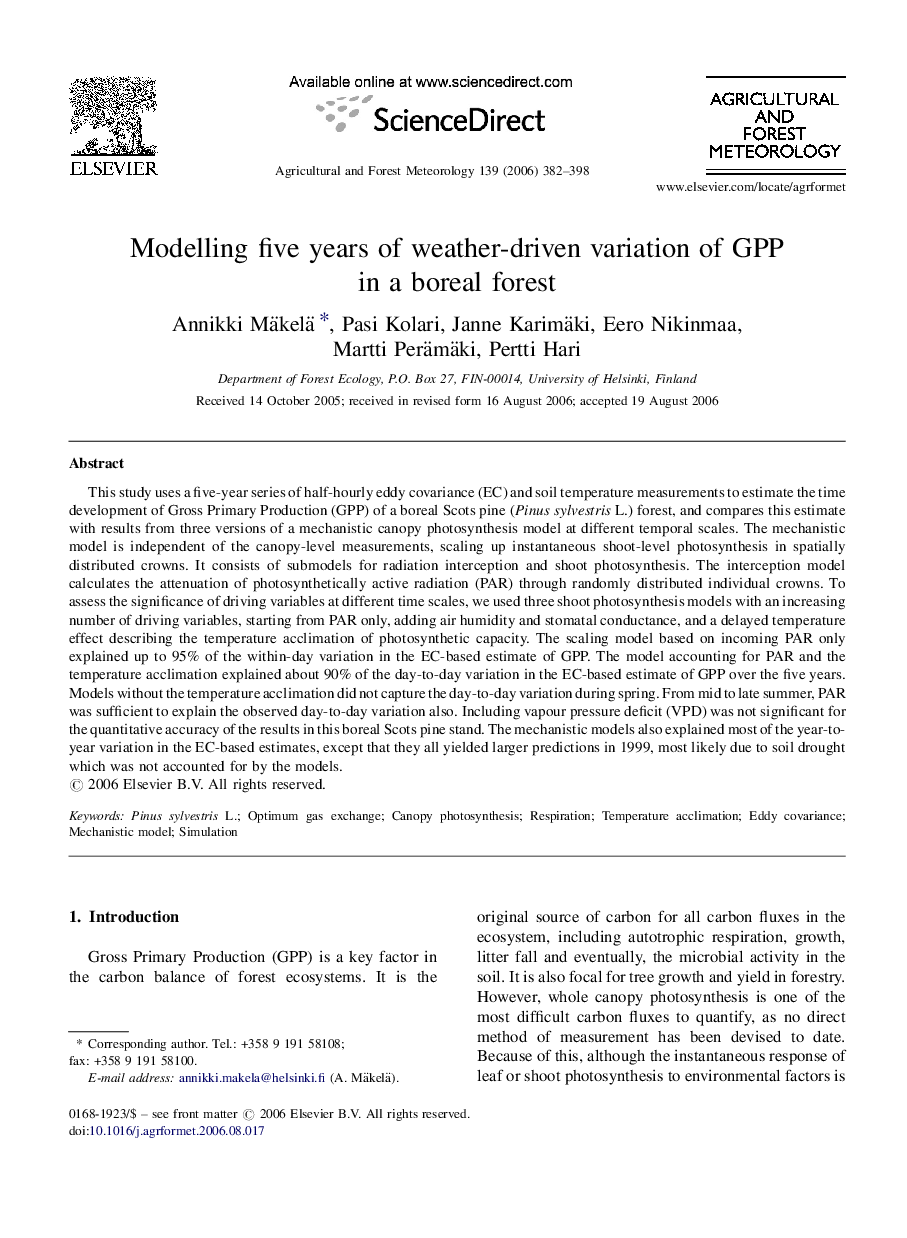| Article ID | Journal | Published Year | Pages | File Type |
|---|---|---|---|---|
| 82978 | Agricultural and Forest Meteorology | 2006 | 17 Pages |
This study uses a five-year series of half-hourly eddy covariance (EC) and soil temperature measurements to estimate the time development of Gross Primary Production (GPP) of a boreal Scots pine (Pinus sylvestris L.) forest, and compares this estimate with results from three versions of a mechanistic canopy photosynthesis model at different temporal scales. The mechanistic model is independent of the canopy-level measurements, scaling up instantaneous shoot-level photosynthesis in spatially distributed crowns. It consists of submodels for radiation interception and shoot photosynthesis. The interception model calculates the attenuation of photosynthetically active radiation (PAR) through randomly distributed individual crowns. To assess the significance of driving variables at different time scales, we used three shoot photosynthesis models with an increasing number of driving variables, starting from PAR only, adding air humidity and stomatal conductance, and a delayed temperature effect describing the temperature acclimation of photosynthetic capacity. The scaling model based on incoming PAR only explained up to 95% of the within-day variation in the EC-based estimate of GPP. The model accounting for PAR and the temperature acclimation explained about 90% of the day-to-day variation in the EC-based estimate of GPP over the five years. Models without the temperature acclimation did not capture the day-to-day variation during spring. From mid to late summer, PAR was sufficient to explain the observed day-to-day variation also. Including vapour pressure deficit (VPD) was not significant for the quantitative accuracy of the results in this boreal Scots pine stand. The mechanistic models also explained most of the year-to-year variation in the EC-based estimates, except that they all yielded larger predictions in 1999, most likely due to soil drought which was not accounted for by the models.
